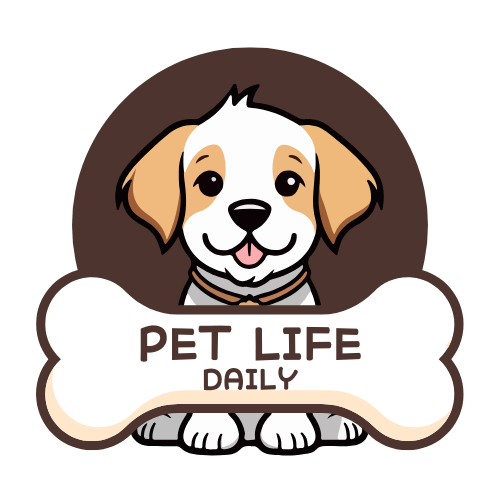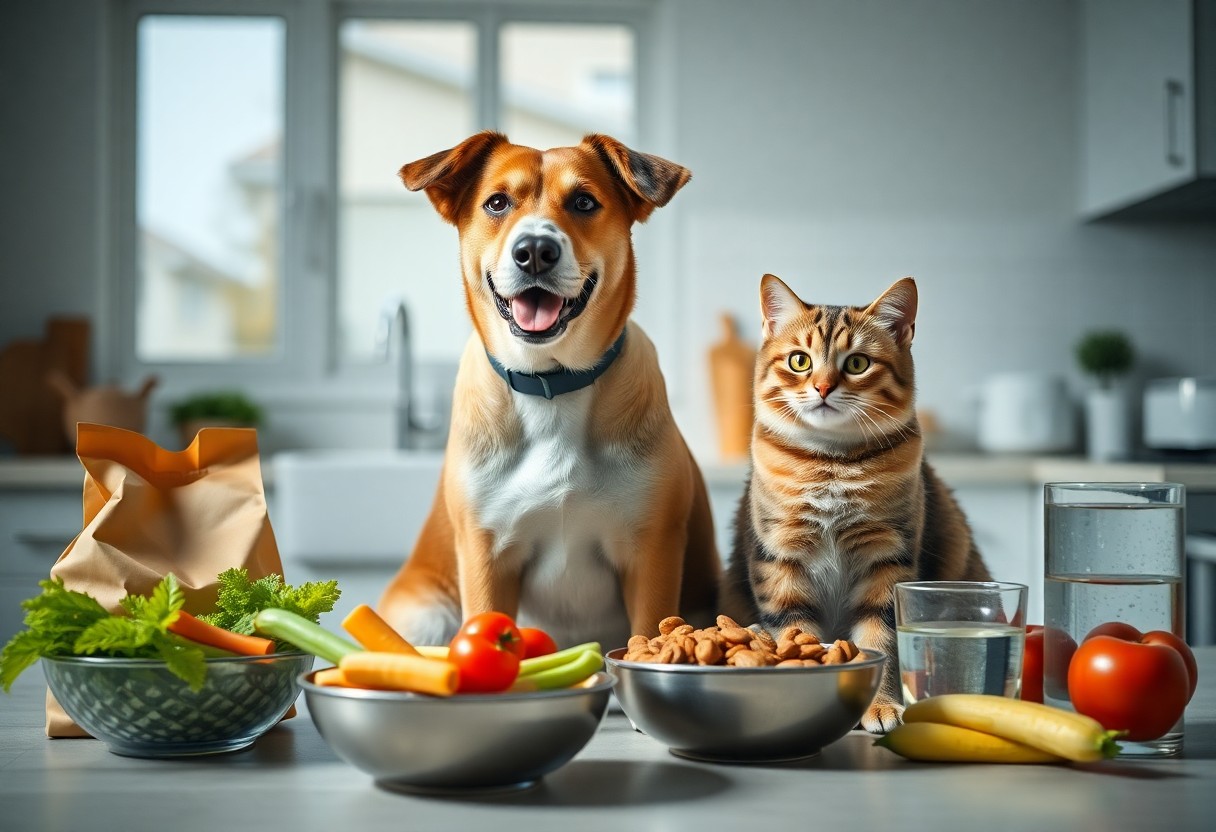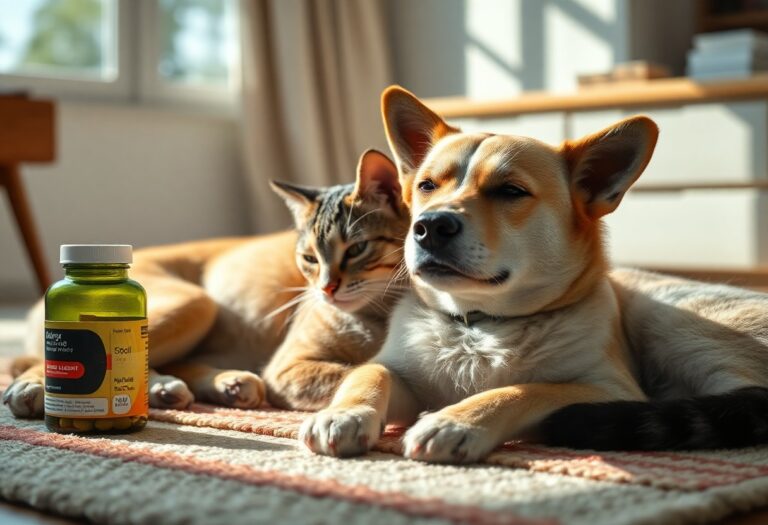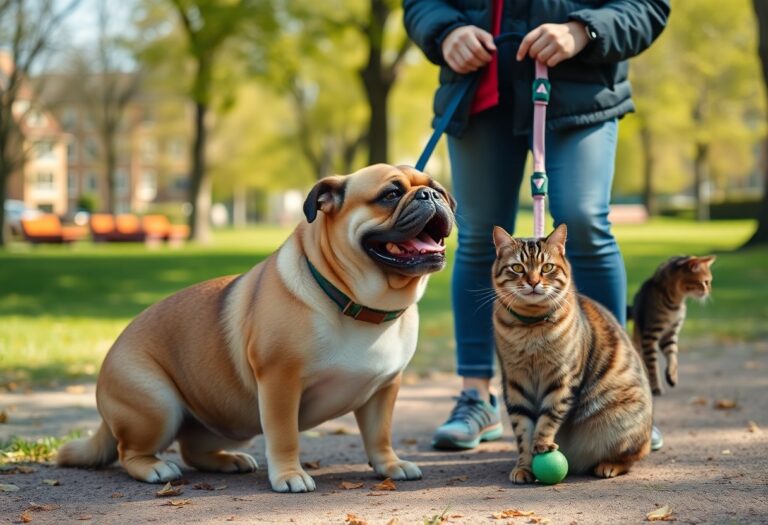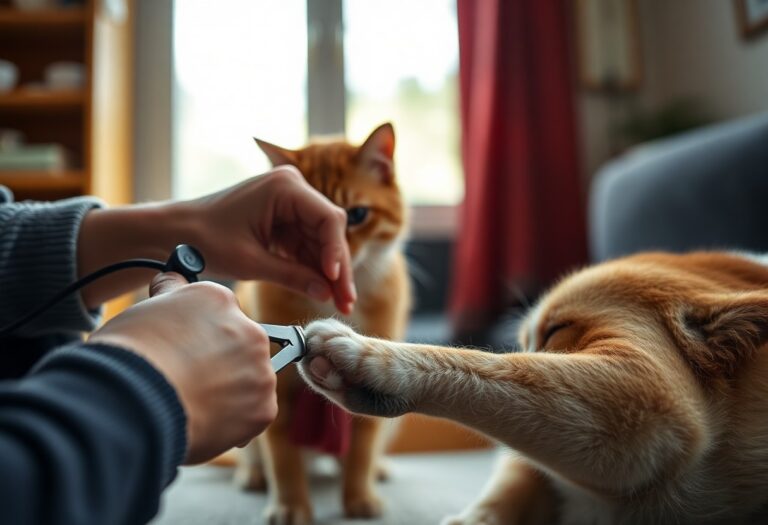With a few simple adjustments to your pet’s diet and routine, you can effectively alleviate stomach issues and improve their overall well-being. You may find that the right changes can lead to a happier, healthier life for your furry friend. Understanding how to spot the signs of digestive discomfort is important, as well as knowing which foods to avoid and which to introduce. By following this guide, you can take proactive steps to enhance your pet’s digestive health and ensure they stay comfortable and happy.
Common Symptoms That Indicate Stomach Issues
Recognizing Digestive Distress in Pets
Identifying digestive issues in your pet often begins with observing their physical symptoms. Common signs include *vomiting*, *diarrhea*, and *bloating*. You may notice your dog or cat pacing restlessly or adopting unusual postures, such as stretching out after eating or seeking comfort in cool surfaces. Additionally, weight loss or changes in appetite are key indicators that should not be overlooked. A sudden increase in water intake might also signal an underlying problem, potentially pointing to a more serious condition that warrants immediate attention.
The timing and frequency of these symptoms provide valuable clues to understanding your pet’s digestive distress. For instance, if your dog experiences intermittent vomiting after meals, there may be an issue with the food itself or a more serious condition affecting their stomach. Keeping a diary of these symptoms can help track patterns and assist your veterinarian in diagnosing the issue effectively.
The Role of Behavioral Changes in Identifying Problems
Behavioral changes can offer significant insights into your pet’s health, particularly concerning their stomach issues. If you find your pet hiding more than usual, showing signs of aggression, or exhibiting lethargy, these behaviors could be linked to discomfort. Many pets instinctively withdraw when they feel unwell, making it imperative for you to pay attention to their emotional state as well as their physical symptoms. When pets are in pain, they may also exhibit changes in their eating habits, such as eating less or showing disinterest in their favorite foods.
For example, if your usually playful puppy becomes withdrawn or your cat starts spending excessive time grooming or licking their lips, these behavioral shifts may indicate gastrointestinal discomfort. You might also notice changes in their social interactions, which can be a signal of stress or pain. It is imperative to remain vigilant for these shifts and engage with your pet more during these times, as increased bonding can help them feel secure while you work to address the underlying stomach issues.
The Impact of Diet on Pet Gastrointestinal Health
Your pet’s diet plays a pivotal role in their overall gastrointestinal health. The food you provide not only supplies important nutrients but also influences the balance of gut bacteria, which can affect digestion, nutrient absorption, and even stool quality. Subpar diets, filled with low-quality ingredients or too many fillers, can lead to issues such as gas, bloating, and diarrhea. Incorporating wholesome, natural foods that are rich in fiber can support your pet’s digestion. Furthermore, some pets may have sensitivities to common ingredients found in many commercial pet foods, leading to further gastrointestinal distress.
Choosing the Right Food for Sensitive Stomachs
The Importance of Portion Control and Feeding Schedule
Environmental Factors That Can Aggravate Stomach Issues
Various environmental factors in your pet’s surroundings can significantly influence their digestive health. Common elements such as loud noises, too much foot traffic, or even strong scents may create a stressful atmosphere for your furry companion. Prolonged exposure to these stressors can lead to increased anxiety, which may manifest as upset stomachs, nausea, or other gastrointestinal troubles. Additionally, changes in your pet’s environment, like moving to a new house or introducing new pets, can disrupt their sense of security and contribute to stomach problems.
- Frequent disruptions in routine
- Environmental stressors like loud noises
- Changes in household members
- Exposure to strong scents or chemicals
Assume that your pet’s digestive health is directly related to their comfort level in their environment. By addressing these issues, you can help mitigate factors that may provoke their stomach troubles.
How Stress and Anxiety Affect Your Pet’s Belly
Stress and anxiety in pets often lead to a variety of physical symptoms, particularly in their digestive systems. Increased cortisol levels due to distress can cause an imbalance in gut bacteria, impair digestion, and even trigger gastritis or ulcers. Pets may experience an array of symptoms, including loss of appetite, vomiting, or diarrhea. For example, a dog that becomes anxious during thunderstorms may refuse to eat, leading to additional stomach upset.
Furthermore, anxious pets may engage in abnormal behaviors such as excessive licking, which can irritate their bellies and exacerbate existing problems. If you notice your pet exhibiting signs of anxiety or stress, it is crucial to identify the source of their discomfort to help alleviate their stomach issues effectively. This might mean seeking help from a veterinarian or considering calming supplements or techniques.
Creating a Calm and Comfortable Space for Your Pet
Designing a calming environment for your pet plays a significant role in their overall health and well-being. Establishing a designated area where your pet can retreat during stressful moments can lead to a noticeable decrease in anxiety. Make this space inviting and comforting by including their favorite blanket, toys, and a safe spot away from noisy distractions. Dim lighting and calming scents, like lavender, can additionally promote relaxation.
A well-planned space not only provides your pet with emotional comfort but also promotes stability in their routines. Pets thrive on predictability, so maintaining a consistent area ensures they have a haven during stressful times. Incorporating calming elements here—such as low or soft music—can further mitigate stress, thus improving their digestive health over time. Consider this a dedicated sanctuary where your pet can recharge and feel free from disturbances, leading to a happier and healthier belly.
Natural Remedies and Lifestyle Adjustments for Relief
Effective Home Remedies to Soothe Stomach Upsets
One of the simplest ways to alleviate your pet’s stomach troubles is by utilizing effective home remedies. For instance, incorporating a small amount of plain, unsweetened pumpkin puree into their diet can work wonders. Pumpkin is high in fiber, which can help regulate your pet’s digestive system and absorb excess water, preventing diarrhea. Aim to feed your dog or cat a teaspoon of pumpkin for every ten pounds of their weight. Additionally, boiled rice mixed with lean protein like chicken can create a gentle meal that is easy on their stomachs, helping them recover without overwhelming their digestive tract.
Avoid jumping straight to medications unless deemed necessary, as natural approaches often provide sufficient relief. Additionally, consider incorporating ginger into your pet’s routine, as it is known for its anti-nausea properties. You can find ginger supplements specifically formulated for pets or offer a small amount of fresh ginger root, finely grated, mixed into their food. Monitoring your pet’s condition while implementing these remedies can help you gauge their effectiveness and decide when further action is needed.
Incorporating Exercise to Aid Digestion
For pets, regularly incorporating mild exercise into their routines can significantly improve digestive health. Just a simple daily walk or some playtime outdoors encourages peristalsis—the contractions that move food through the digestive tract. This movement can help lessen any discomfort and reduce the chances of constipation or gas. Depending on the size and energy level of your pet, aim for about 30 minutes of exercise each day, which could include fetching a ball, chasing a toy, or even gentle tug-of-war.
A structured exercise schedule not only aids in digestion but also contributes to your pet’s overall well-being. Walking after meals can prevent bloating and help burn off any excess energy your pet may have. This simple act fosters a stronger bond between you and your pet while minimizing the likelihood of digestive troubles. Just be attentive to your pet’s needs; a cozy cuddle on occasion promotes comfort, while engaging in activity keeps their systems running smoothly.
When to Seek Professional Help for Persistent Issues
Understanding the Signs That Require a Vet’s Attention
Persistent digestive distress can manifest through several alarming symptoms that indicate it’s time to consult a veterinarian. If your pet experiences repeated vomiting or diarrhea lasting more than 24 hours, your next steps should involve scheduling a vet visit. Other signals of concern include significant weight loss, blood in vomit or stool, a sudden change in appetite, or prolonged lethargy. Understanding these signs is key; for instance, untreated gastrointestinal issues can lead to dehydration, nutrient deficiencies, and severe complications, making intervention imperative.
Preparing for a Veterinary Consultation on Stomach Problems
Gathering specific information before your veterinary appointment can significantly impact the diagnosis and treatment process. Start by keeping a detailed record of your pet’s symptoms, including onset, frequency, and any potential triggers you’ve noticed. Note any changes in diet, recent stressors, or new medications introduced. Bringing in food labels or a sample of their stool can also provide valuable clues for your vet. This thorough preparation helps achieve a more accurate diagnosis faster.
Having a list of questions ready for your vet allows you to cover all areas of concern without forgetting vital details during the appointment. Focus on aspects such as diet adjustments, potential tests needed, and which signs necessitate immediate action. Consider writing down specific behaviors to discuss, such as whether your pet exhibits discomfort after eating or if they show a tendency to rummage through trash. This information can yield insights that may not be immediately apparent in a clinical setting.
Summing up
Summing up, addressing pet stomach problems can often be achieved through simple and effective changes in their diet and routine. You should consider evaluating your pet’s current food for quality and suitability to their dietary needs. Transitioning to a high-quality, easily digestible diet can significantly impact your pet’s digestive health. Additionally, incorporating smaller, more frequent meals along with fresh, clean water can help alleviate issues such as bloating or discomfort.
Moreover, keeping a consistent feeding schedule and monitoring your pet’s habits will aid in identifying potential triggers for their gastrointestinal issues. You may also want to consult your veterinarian for tailored advice, especially if symptoms persist. By taking these measures, you can enhance your pet’s overall digestive health, making a noticeable difference in their well-being and happiness.
